Anyone who isn’t a complete newcomer to the world of ecommerce has likely heard of Shopify. After all, it's one of the internet's top contenders when it comes to complete ecommerce solutions.
Some may even say it's ruled the market for quite some time now.
However, with the rise of all-in-one turnkey platforms like Shift4Shop, we may have stumbled across a viable competitor for the ecommerce giant.
Both Shift4Shop and Shopify boast a wide range of ecommerce features, providing merchants everything they need to start selling online and grow their businesses.
From extensive product options, marketing and SEO tools, customer management features, and much more besides, both Shift4Shop and Shopify have lots to offer.
Quick verdict:
In our view, Shopify stands out as one of the top ecommerce builders available. Its remarkable flexibility affords businesses the liberty to offer an array of digital and physical items. Additionally, it facilitates dropshipping and print-on-demand services, complemented by a wide range of helpful applications.
Alternatively, Shift4Shop stands out as a reliable service. You get a really strong inventory system, plenty of handy sales features, and you don’t have to spend a fortune either.
That said, in this review, we're putting both platforms under the microscope to decipher whether Shopify's finally met its match with Shift4Shop. Let's dive in…
- Full solution from $29/month
- Limited time offer: first 3 months for $1/month
- SEO Friendly
- Offline Store
- App Store
- 24/7 Support
- Beautiful Templates
- Free Plan
- Social Integrations
- Custom Designs
- Gift Certificates
- App Store
In this article:
- Quick verdict:
- Shift4Shop vs Shopify: Their Pros and Cons
- Shift4Shop vs Shopify: Background Info
- Shift4Shop vs Shopify: Their Basic Features
- Shift4Shop vs Shopify: Pricing
- Shift4Shop vs Shopify: Ease of Use
- Selling Online with Shift4Shop vs Shopify
- Shift4Shop vs Shopify: Designs
- Shift4Shop vs Shopify: Customer Support
- Shift4Shop vs Shopify: Integrations and Extensions
- Shift4Shop vs Shopify: Payment Processing and POS
- Shift4Shop vs Shopify: Our Final Verdict
Shift4Shop vs Shopify: Their Pros and Cons
Before you can decide which ecommerce platform's right for you, you need a good understanding of the potential advantages and downsides. Every tool has them!
Shopify's Pros 👍
- Shopify offers a fantastic range of sales and store management features
- There's a choice of pricing plans that suit different budgets
- Hundreds of third-party apps and themes are available, so there's plenty of design and functionality flexibility
- Shopify provides high-quality 24/7 support
- There's a thriving community comprising thousands of active users
- Shopify works alongside an impressive range of sales channels, including social media and Amazon. This works wonders if you're looking to get into multi-channel selling.
- There’s a built-in blogging engine and abasic CRM included
- No coding knowledge is required.
- You can manage your store and sell on the go via Shopify's mobile app.
Shopify's Cons 👎
- There isn’t a free plan.
- With the $29 a month Shopify plan, you still have to pay transaction fees.
- There's a bit of a learning curve when it comes to familiarizing yourself with Shopify’s extensive suite of features.
- You’ll likely still rely on third-party apps to extend the functionality of your store, which can drive up the cost considerably. For example, Shopify doesn’t come with a loyalty rewards program, affiliate marketing, or real-time shipping tracking. As such, to access these kinds of features, you may want to utilize plugins.
- There are only ten free themes available.
Shift4Shop's Pros 👍
- You don’t need coding know-how to create an online store.
- There's a wide range of sales, store management, and marketing tools available.
- There's a built-in blogging engine and CRM.
- There’s an app store where you can download plugins to extend the functionality of your online shop.
- You have access to 24/7 technical support.
- There are over 100 free themes to choose from
- US merchants can build and run their stores for free when they use Shift4Payments.
- With the free plan, Shift4Shop provides a vast range of features right out of the box. Its base features are much more extensive than Shopify’s paid-for plans!
- Features like loyalty reward programs, B2B and wholesale customization, email marketing, affiliate programs, and gift registries are included from the get-go.
- Great SEO optimization
Shift4Shop's Cons 👎
- There's limited customization for template designs.
- Shift4Shop, formerly known as 3Dcart, is still relatively new and undergoing lots of changes.
- You’ll rely on some apps to extend the functionality of your store, raising the cost overall.
- Shift4Shop's free plan isn't available to international vendors
- Shift4Shop's online community isn’t as active as Shopify’s.
- There’s isn't a mobile app available.
Shift4Shop vs Shopify: Background Info
Let’s start with some background info to explain who these providers are and what they offer.
Both Shopify and Shift4Shop are turnkey ecommerce software, meaning you don't need anything else to start selling online.
With these SaaS's Setting up your ecommerce store is quick and easy. Simply select your preferred theme, customize it to your liking, and upload your first products.
What is Shopify?
Shopify has been around since 2006 and has since become one of the most popular ecommerce platforms on the web.
It's one of the world’s most powerful tech and online sales companies and is famous for its scalability and its extensive array of sales features.
What is Shift4Shop?
Shift4Shop boasts over 21 years in the industry, but you might not recognize it under its current name. Initially, it was 3Dcart.
The ecommerce solution was purchased by Shift4Payments in 2020. Since then, the platform has undergone a few changes and is ready to leave old reputations behind.
Fast forward to today, and Shift4Shop is a viable Shopify competitor, offering similar features, pricing, and add-on services.

Both companies also offer enterprise-level solutions and come with POS functionality.
Shift4Shop vs Shopify: Their Basic Features
As we just said, Shift4Shop and Shopify offer a range of similar features. So let’s quickly review what you can expect from both platforms:
Online Store Functionality
Both Shift4Shop and Shopify enable you to build online stores using templates without any coding smarts. You can host and sell unlimited products, create product variations, sell via several sales channels and marketplaces, and access over 100 payment gateways.
Inventory Management
Both tools automatically track inventory as and when orders are processed. You'll receive notifications when stock is running low, and you can even create automated rules to reorder from suppliers. In addition, Shopify enables you to handle inventory across multiple store locations. As this is included in its pricing, Shopify's the slightly better solution for managing brick and mortar stores alongside online sales.
Calculate Shipping Charges
With both platforms, you can calculate shipping rates and print shipping labels. In addition, both Shopify and Shift4Shop work with the US's most popular carriers.
Coupons and Discount Codes
Both platforms enable you to create customer discounts, run special offers, sell gift cards, bundle products, and more.
Apps and Add-ons
Shift4Shop and Shopify both provide extensive app stores. However, Shopify has a slight edge here, as app developers usually make Shopify the priority. Whereas, at the time of writing, the same can't be said of Shift4Shop.
Multilingual Capabilities
Shift4Shop lets you translate your homepage into another language. In contrast, Shopify enables you to create multilingual checkout pages in over 50 languages. But, unfortunately, neither tool offers site-wide multilingual capabilities (unless you opt to use a third-party extension).
Customization
Both Shopify and Shift4Shop enable you to choose a template and customize it using their theme editor. Both website editors are intuitive and straightforward to use, and neither requires any coding. Both platforms also allow you to tap into your site's HTML/CSS markup to make more advanced edits.
SEO
Both Shift4Shop and Shopify enable you to optimize your eCommerce website for SEO. For example, you can edit the meta tags, product descriptions headlines and allow Google product reviews. Also, both providers automatically generate a sitemap for your store.
In addition, Shift4Shop’s product pages are Google-AMP compatible straight out of the box. Whereas to achieve similar results with Shopify, you’ll have to download and use a plugin. Also, you’re free to customize your URL structures however you want with Shift4Shop; in comparison, Shopify isn’t quite as flexible.
Reports
Both Shift4Shop and Shopify come with a range of reporting and analytics tools that highlight your best-performing products and, conversely, whereabouts in your business; there’s room for improvement. For example, Shift4Shop tracks exactly where customers drop-off in the order process.
In addition, both platforms integrate with Google Analytics, where you can glean further insights about your website. Also, both platforms enable you to generate and view reports using intuitive dashboards.
Blogging
Both Shopify and Shift4Shop come with in-built blogging modules with SEO optimization for better visibility on search engines. On top of that, both platforms let you organize blog posts into article categories, and you can enable readers to leave comments.
Extra Marketing Features
Shift4Shop also offers built-in affiliate marketing, a loyalty reward program, gift registries, and the ability to customize rules for B2B and wholesale customers.
In contrast, with Shopify, you’ll need a third-party app to unlock these features.
That said, both platforms offer a basic email marketing functionality and a CRM where you can segment and track customer details.
Shift4Shop vs Shopify: Pricing
No merchant can settle on an eCommerce platform without considering their budget. So, let’s take a look at how Shift4Shop and Shopify compare when it comes to value for money:
Shopify
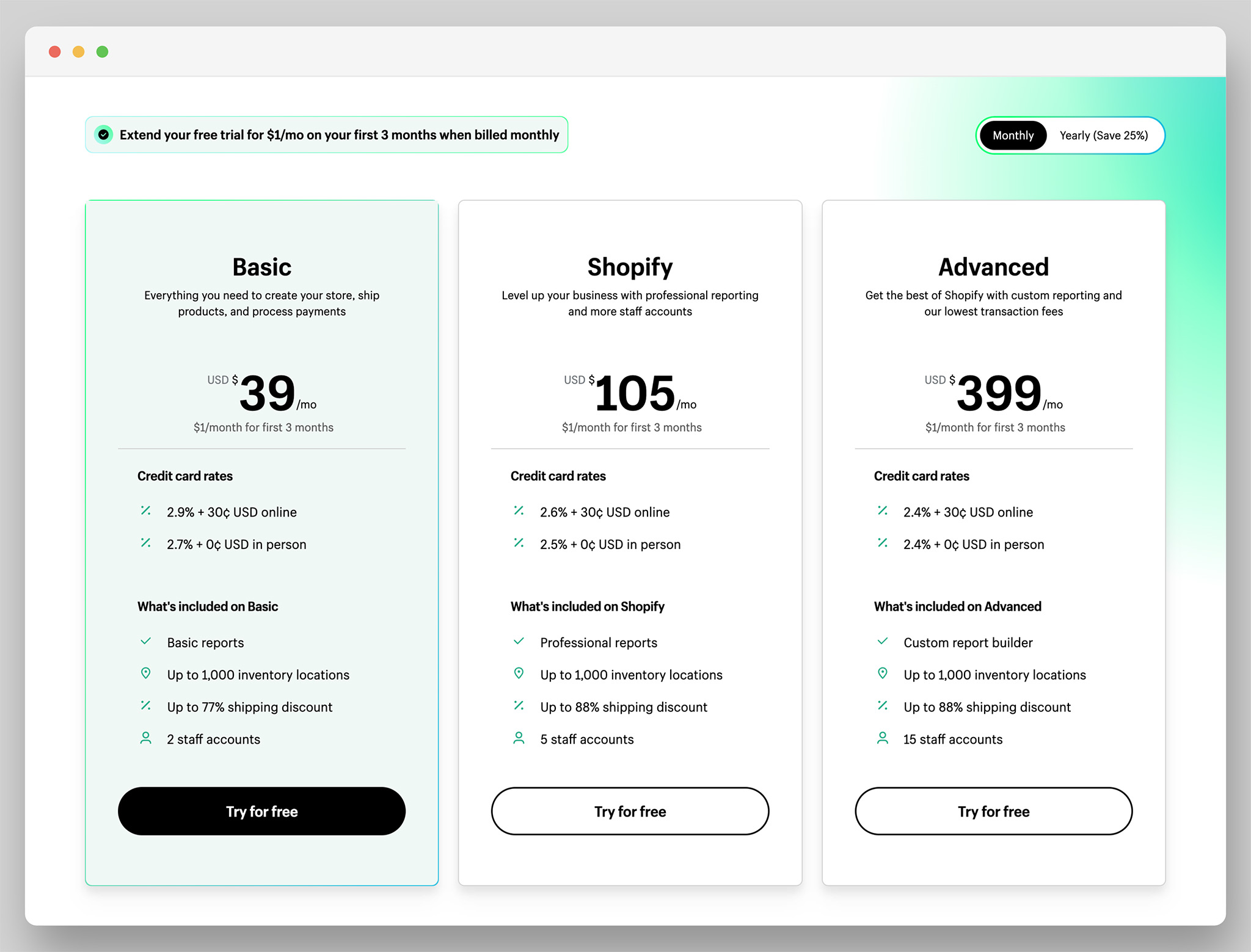
Generally speaking, when you consider the sheer number of features on offer, Shopify’s regarded as one of the more affordable eCommerce platforms on the market.
The cheapest way to engage with Shopify is with its “Buy Button.” This is available for just $9 a month and allows you to make sales via an existing website and social media. However, you can’t create your own online store or access any of the online sales features that Shopify’s famous for.
To build your own storefront, you’ll need to subscribe to at least the Basic Shopify package. This costs $29 per month, for which you’ll get:
- Two staff accounts
- 24/7 support
- You can sell unlimited products
- You can create and use discount codes
- You can manually create orders.
- An SSL certificate
In addition to the monthly fee, you’ll pay a 2.9% + 30 cents transaction fee on every sale you make when a customer purchases using a credit card or debit card. And an extra 2% if you’re not using Shopify Payments.
For $79 per month, you can upgrade to the Shopify plan. This unlocks five staff accounts and reduces your card transaction fees to 2.6% (+ a 1% fee for not using Shopify Payments). In addition, you can also customize international pricing and access standard reports.
👉 Read our comprehensive Shopify Payments review.
The Advanced Shopify plan is available at $299 per month and suits businesses looking to scale their operations. This plan includes 15 staff accounts and further reduces transaction fees. You can also set individual product prices for different countries and/or regions.
Larger Enterprises can scale further with Shopify by getting a custom quote for an Enterprise-grade solution: Shopify Plus.
Shift4Shop
Shift4Shop boasts similarly affordable prices…and might even be more affordable than Shopify altogether. Like Shopify, Shift4Shop offers three premium plans, all of which are suitable for small to medium-sized businesses.
All plans benefit from 24/7 support, secure and unlimited hosting, the ability to sell unlimited products, and over 100 free templates to choose from. Best of all, Shift4Shop doesn’t charge transaction fees with any of its packages.
Below we’ve outlined each premium plan:
- Basic: $29 per month. Here you can register two staff members and enjoy access to all of Shift4Shop’s essential features.
- Plus: $79 per month. Here you can register five staff users and access Shift4Shop’s complete marketing suite. In addition, you can now segment customers, benefit from more product information options, and create a customer loyalty reward program.
- Pro: $229 per month. Now, you can add eCommerce automation features and a total of 15 staff accounts. Other features include waiting lists and back-in-stock alerts, autoresponder campaigns, preorders, advanced site search, automation rules, and more.
If you’re a US merchant, Shift4Shop has one more ace up its sleeve. If you opt to use (only) Shift4’s payment processing system, you’ll get their complete end-to-end eCommerce solution for free, i.e., the Pro plan.
This means you get to build your store, promote and sell your products, manage your orders and inventory, all without a monthly cost. All you’ll pay is a 2.9% + 30 cent fee on your transactions.
Sound familiar?
…That’s because it’s the same transaction fee you’d pay with the Basic Shopify plan in addition to $29 per month.
Unfortunately, this Shift4Shop no-cost option isn’t available for sellers outside the US. So, be sure to bear that in mind when you make your decision.
Shift4Shop vs Shopify: Ease of Use
First off, neither platform requires you to bring any coding skills to the table, and both are relatively easy to wrap your head around.
However, Shift4Shop and Shopify have different approaches to how many features they include with their software.
For instance, Shopify offers a streamlined yet robust service and allows you to expand using apps from its store.
Shift4Shop does the same to an extent but provides a greater number of features in its core functionality. As a result, Shift4Shop can be a little overwhelming to use.
However, ease of use comes at a trade-off for value for money. If you opt to use Shift4Shop’s in-built payment processor, you’ll benefit from features offered by Shopify that are otherwise reserved for its higher-paying customers.
In light of that, we think the extra features are worth the additional learning curve.
Selling Online with Shift4Shop vs Shopify
Shopify’s online selling features remain a critical part of its value proposition and don’t disappoint. With Shopify, you can sell unlimited digital and physical products.
The tool also includes everything you need to create enticing product pages, product variations, discounts and offers, and more.
On top of that, your customers can create accounts, and you can categorize customers into groups. Not to mention, you can also set flexible shipping rates, automatically calculate taxes, and offer free shipping where appropriate.
You can also launch abandoned cart recovery campaigns and present your checkout in over 50 languages.
Shopify also comes with powerful SEO features to ensure your products enjoy better visibility on popular search engines.
Shift4Shop matches Shopify where the vast majority of these features are concerned. For instance, both providers come with powerful product organization features. Plus, on product pages, you can insert multiple images and even videos.
You can also sell subscriptions on both and easily import and export your product lists. Both let you sell via Facebook and enable you to create gift cards and discounts to create special offers.
In fact, Shift4Shop goes a little further in some areas. For one, you can stack special offers and promotions, whereas Shopify only lets a product be part of one offer at a time.
You can also sell your products with a pay-as-much-as-you-want option. And with customer groups, Shift4Shop allows you to offer special incentives to specific customers.
For example, tax-exempt sales for non-profits, cheaper shipping for your VIP customers, and you can set minimum order values for B2B audiences. Shift4Shop automatically assigns your customers ‘loyalty scores’, so you can easily track your most loyal customers and elevate them with special discounts and offers.
That said, one area where Shopify wins in mobile selling. Shopify comes with a mobile app where you can manage your store and orders while you’re on the go. This is something Shift4Shop’s yet to offer.
Shift4Shop vs Shopify: Designs
With thousands of ecommerce businesses competing online, your brand needs to stand out.
Both Shift4Shop and Shopify have a similar approach to website customization and include a fully-fledged website builder.
First, you choose a theme that dictates the basic look and feel of your shop. Then you use the theme editor with its drag-and-drop interface to further customize your template.
Shopify starts you off with ten free themes to choose from. However, hundreds of premium themes are available at a one-time fee (usually ranging from $140-$180).
Shopify’s free themes are stylish and modern and suit most niches. Still, you may have to upgrade to a paid-for theme for something more specific, as many premium themes come with additional customization options.
In contrast, Shift4Shop has 110 free themes to choose from. But, almost all of them are better suited to large businesses offering a wide range of products.
On the other hand, they aren’t as good for small businesses with a limited selection. Also, although there’s a greater choice of themes, most of the templates aren’t very distinguishable.
It’s also worth noting: In the futureShift4Shop plans to offer third-party themes, but at the time of writing this wasn’t available.
Shift4Shop allows you to tweak the colors and typography of your theme. Changes appear in a real-time preview, and you can always reset your theme to its default appearance. You can also insert your logo and use the drag-and-drop editor to add content blocks and customize the layout.
Shift4Shop’s theme editor is only available for some of Shift4Shop’s themes, and customization is therefore severely limited.
In contrast, Shopify’s intuitive editor is available with all its themes and allows you to do everything Shift4Shop's editor does and more.
Shift4Shop vs Shopify: Customer Support
Both Shift4Shop and Shopify offer 24/7 support on all of their premium plans. You can contact their support teams via email, live chat, or phone.
Both platforms also come with extensive online knowledge bases where you’ll find hundreds of articles on using their features.
However, Shopify has a more active and thriving community, so you’ll always be able to turn to your peers for assistance. In addition, articles on the web are similarly more extensive compared to Shift4Shop.
Shift4Shop vs Shopify: Integrations and Extensions
While Shift4Shop and Shopify offer many features out of the box, sometimes you’ll still need to look towards third parties. This is especially true if you’re looking for in-depth warehouse management, email marketing, and accounting services.
As we’ve already said, both providers offer an app store. With Shopify, you can browse over 500 different app extensions developed by third-party and in-house teams.
Here, you can access better SEO and marketing tools, access loyalty reward programs, integrate with CRMs, and real-time shipping tracking – to name but a few examples!
Shift4Shop comes with more built-in features. So ultimately, it relies a little less on extensions, which is fortunate because its app store isn’t quite as extensive.
Unfortunately, Shopify is often the first on the list for third-party developers, leaving Shift4Shop a bit behind the curve. As a relatively new service, Shift4Shop is still making connections and expanding its partners.
However, both providers integrate with heavy hitters, like:
- Facebook Pixel
- Google Analytics
- The Facebook Store
- Amazon
- eBay
Shift4Shop vs Shopify: Payment Processing and POS
Both Shopify and Shift4Shop come with POS systems where you can connect your brick-and-mortar and online stores. This adds a layer of flexibility that not all eCommerce solutions can offer.
Let’s talk about payment processing first.
By now, it’s clear there are perks to using the preferred payment processor offered by either Shopify or Shift4Shop.
With Shopify, you won’t face additional transaction fees on top of monthly subscription fees if you choose Shopify Payments.
With Shift4Shop, choosing their payment processor allows you to access their entire eCommerce solution for free. You’ll only pay a transaction fee on your sales.
Both platforms also provide access to over 100 payment providers, including Stripe, PayPal, Google, and Apple Pay, and can process credit and debit card transactions.
As for POS, Shopify has a free basic POS functionality that allows you to take payments on the go. Most features, however, are locked away behind Shopify POS Pro, which costs an additional $89 per month.
That said, your Shopify plan comes with several store locations included so you can sync your inventory across these sites.
👉 Read our comprehensive Shopify POS review.
In addition, you can purchase barcode scanners, receipt printers, label printers, and more from Shopify’s own range.
Shift4Shop integrates and recommends POS systems from a list of their trusted partners. However, these primarily rely on in-store iPads in-store.
So, the additional cost comes from your chosen POS software and the hardware you opt to rent or purchase.
Shift4Shop vs Shopify: Our Final Verdict
In the long-term, it’s plain to see how Shift4Shop might become a bitter rival for ecommerce giant Shopify. While the two offer extensive sales features, Shift4Shop provides more out-of-the-box functionality for US merchants.
That said, you might prefer Shopify if you also manage physical stores and want a premium POS system that integrates seamlessly with your online store.
Shopify also has a more active online community, a thriving and extensive app store, and a history of stellar customer support.
The latter is something 3dcart users often complained about, so the future of Shift4Shop is still a little uncertain.
Is the new direction and management going to turn the platform’s previous reputation around entirely?
For now, Shift4Shop is still growing and expanding, and many of its features aren’t wholly worked out yet. So, if a newer platform like this makes you nervous, you might find Shopify a more reliable bet.
When it comes to value for money, there’s no denying Shift4Shop makes an enticing offer with its free end-to-end eCommerce plan. Suppose you’re a US merchant willing to use Shift4 Payment.
In that case, nothing is holding you back from gaining access to one of the most feature-rich all-in-one ecommerce platforms on the market today.
What’s your experience with Shift4Shop and Shopify? Are you thinking about moving your store across to Shift4Shop with their free migration help?
Or do you believe Shopify is the better choice for your business needs? Alternatively, do you think you'll opt for one of their competitors like Magento, BigCommerce, Wix, or WordPress and WooCommerce?
Whatever you think/decide, let us know in the comments box below!





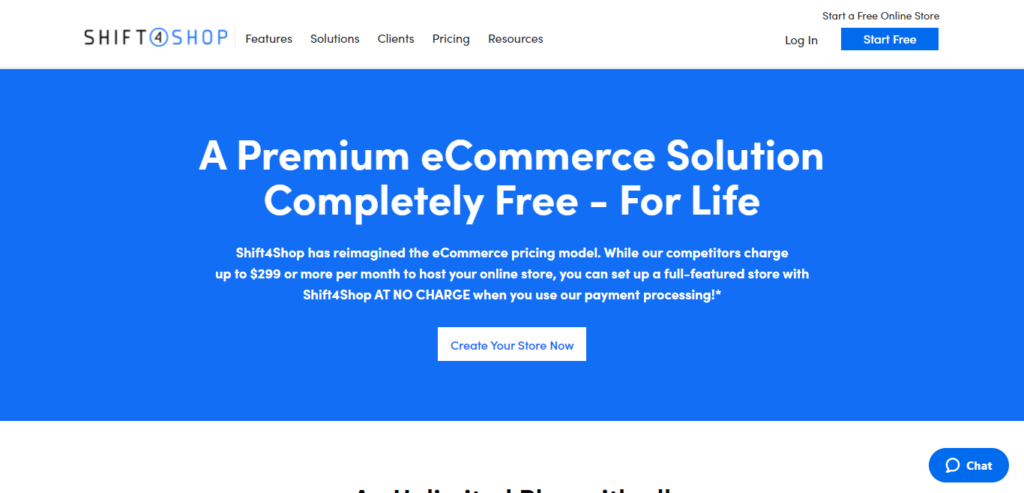
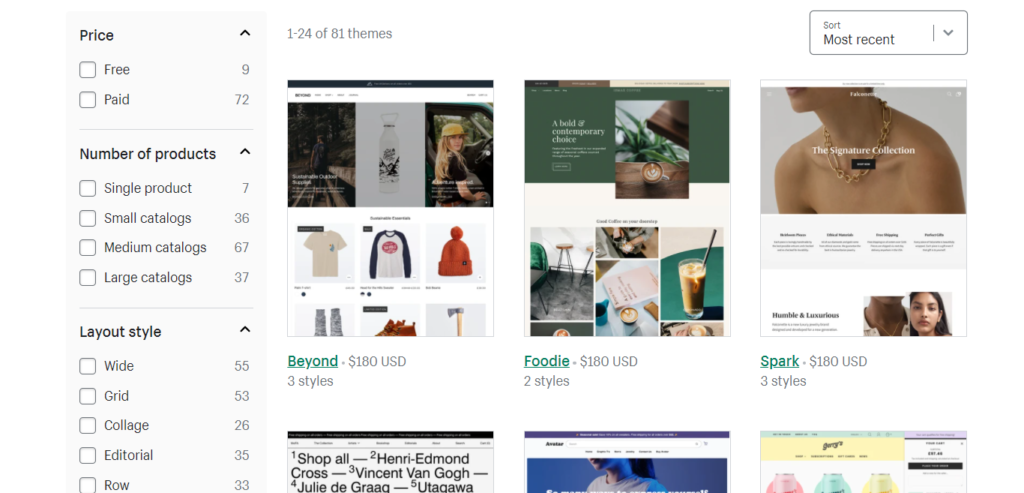
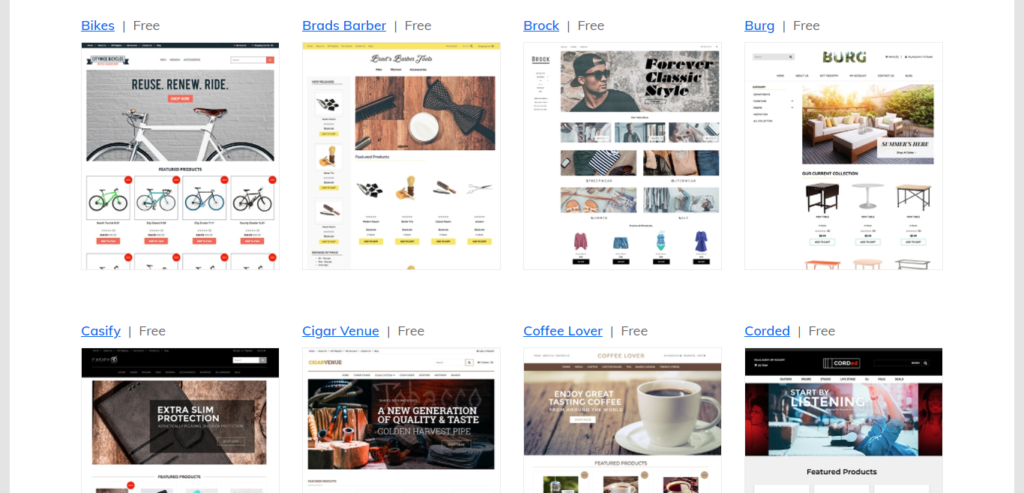
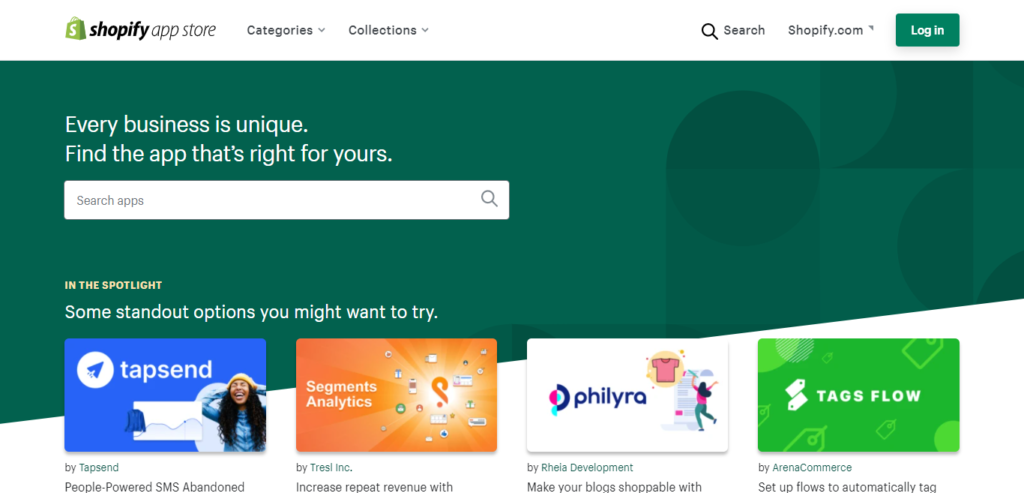
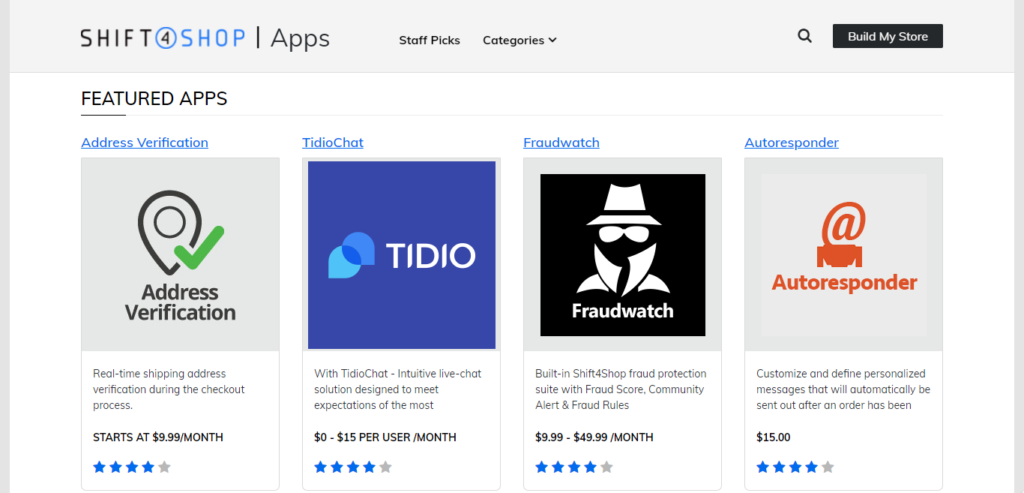



I like S4S because you can have as many different online stores as you want and it won’t cost you a dime. You can take as long as you want to work on it.
The only downside imo, is that refunds for cc transactions that you cancel are damn near impossible to get resolved
👍
This article has convinced me to try Shift4Shop for my small collectibles business. Reading the providers’ websites alone didn’t give me enough info about transaction fees or POS transactions but this article has cleared it all up. I’ll let y’all know how it goes!
Good luck Nicole!
I believe Shopify and Shift4shop are two of the best on the market. But it depends on what you sell. I sell pepper spray and stun guns for personal protection which is not allowed on Shopify but Shift4shop lets me sell non-lethal self-defense products as long as I use their payment provider Shift4payments.
Shopify uses Stripe as their payment processer which does not allow self-defense products.
Otherwise, I would use Shopify.
And I got a free website with Shift4shop
This was an awesome read! Lot’s of great and important information. I’m currently using Ecwid but ready to migrate to another e-commerce. I’m stuck between Shift4Shop and Shopify.
This article pointed out lots of points. At the moment I’m still indecisive but I have more information now to make a better decision.
Thank you!!
You’re welcome C.G.!
It looks like you spent a lot of time and effort on your blog. I like to read well-written articles. I learned a lot from your article and I have already bookmarked and am waiting to read a new article. keep up the good work!